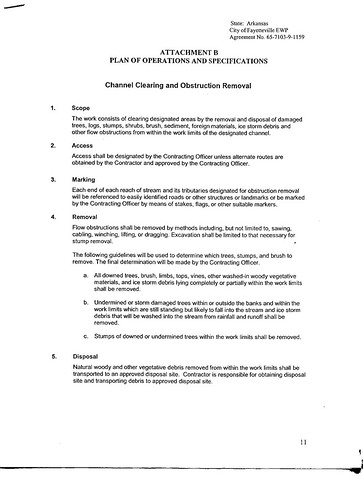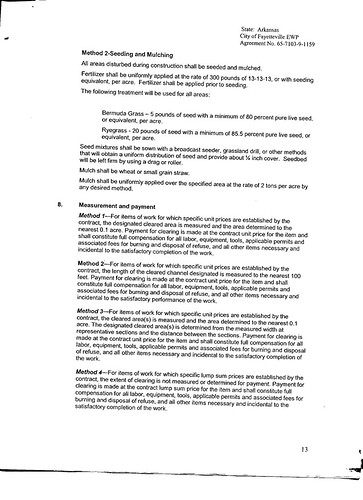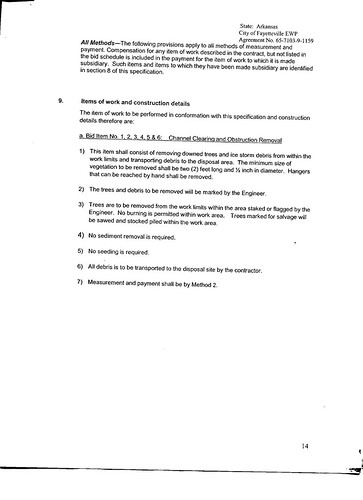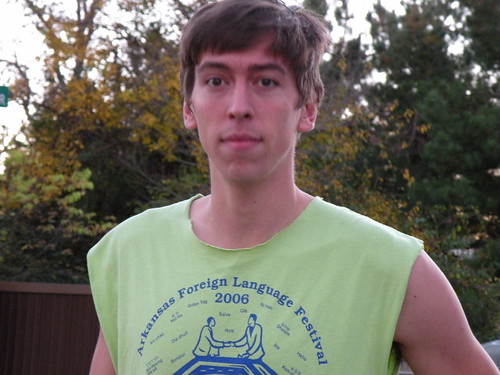Asclepias incarnata, the swamp milkweed, struggles during a dry summer such as July 2009.
Swamp milkweed
Aubrey james | MySpace Video
Sunday, November 29, 2009
Thursday, November 26, 2009
Two varieties of goldenrod identified beside the new city trail west of World Peace Wetland Prairie by Theo Witsell of the Arkansas Heritage Commission
Theo Witsell of the Arkansas Natural Heritage Commission points out big bluestem, little bluestem and broom sedge from Pinnacle Prairie Trail on west side of World Peace Wetland Prairie on November 21, 2009
Three of four tall-grass species right here, Witsell says
Aubrey james | MySpace Video
Theo Witsell and little bluestem vs broom sedge
Aubrey james | MySpace Video
Little bluestem
Scientific Name: Schizachyrium scoparium (Michx.) Nash.
Common Name: Little bluestem
Morphological Characteristics:
A native, perennial, warm season, long-lived bunchgrass. Culms are 1 to 4 feet tall, erect and large tufted, having occasional short rhizomes. Basal stems and sheaths are flattened. Leaf blades are hairless; V shaped in cross section, keeled, light blue-green when young turning reddish brown at maturity. Ligules 1/16 inch in length, membranous, with singed margins. Inflorescence consists of several unbranched racemes, one on the end of each seed stalk. Spikelets are paired along raceme axis; fertile one plump, awned and stalkless; sterile one stalked, awnless or awn tipped.
Little bluestem has a deep fibrous root system, and may be semi-sod forming in sub humid zones. As a warm season grass it begins growth in late spring and continues through the hot summer period until the first killing frost. It is easily mistaken for common broomsedge (Andropogon virginicus) except little bluestem has very flat bluish basal shoots. Broomsedge has a straight awn and has two or more stalked seed clusters per branch. Little bluestem has a twisted, bent awn and a single cluster of seeds per branch. Seacoast bluestem (Schizachyrium scoparium var. littorale) occurs only in the coastal plain region. It is very similar to little bluestem but can be distinguished by the bent stems at the base, whereas little bluestem stems are erect.
Little bluestem is one of the most widely distributed native grasses in North America. It will grow on a wide variety of soils but is very well adapted to well drained, medium to dry, infertile soils. The plant has excellent drought and fair shade tolerance, and fair to poor flood tolerance. It grows preferentially on sites with pH 7.0 and slightly higher.
Conservation Use:
Why collect this plant?
In north-central Texas there is a lack of locally-adapted native (ecotypic) plant materials for use in revegetation projects. The North Texas Ecotype Project (NTEP) was established to conserve the culturally, historically, and ecologically important native plants of north-central Texas, and promote their use for revegetation projects.
The Knox City Plant Materials Center in cooperation with NTEP have identified little bluestem as a plant meeting project objectives. Plant and seed collections supporting NTEP are targeted for 43 counties located within all or portions of 6 vegetation areas in north-central Texas including: Blackland Prairie, East Cross Timbers, Fort Worth Prairie, Lampasas Cut Plain, West Cross Timbers and Rolling Plains.
Future ecotypes developed will benefits the following conservation practice standards: 645 Upland Wildlife Habitat Management; 342 Critical Area Planting; 562 Recreation Area Improvement; 550 Range Planting; 327 Conservation Cover; 643 Restoration and Management of Rare or Declining Habitats.
Your assistance in collecting this plant helps support the NRCS conservation practice standards which are employed daily to conserve the natural resources of Texas!
Center Requesting Seed:
Knox City Plant Materials Center
How to Collect Seed:
Identify native plant stands in your area. You can go to the following websites for helpful photos http://plants.usda.gov or http://www.noble.org/imagegallery/index.html or www.wildflower.org
Determine if seed is mature. Mature seed is typically dry and will easily separate from the seed head.
Hand strip mature seed by grasping the bottom of the seed head then gently pulling away from the base of the plant. Deposit seed in a brown paper sack. Collect seed from a minimum of 30 to 50 plants.
Label each collection as it is made so collections do not get mixed up. Information required includes: Collector’s name, number of plants collected, location (parish, city, highway, and GPS coordinates), site description (soil type, slope, and plants growing in association).
Complete NRCS-ECS-580; Plant Collection Information Form and mail with collected seeds to the NRCS Plant Materials Center requesting the species.
Knox City Plant Materials Center
3776 FM 1292
Knox City, TX 79529-2514
Helpful Tips:
Look for superior plants that display differences in color, height, or forage abundance and record observations. Differences in growing site or location should be made into separate collections if they are separated by more than 1 mile between sites.
Broomsedge
Andropogon virginicus
Broomgrass, Broomsage, Broomsedge bluestem, Broomstraw, Sage grass, Yellow bluestem
Grass
Several stems may arise from each clump of broomsedge. They will turn yellow-tan in the fall.
©James H. Miller, USDA-NRCS Plants Database
Broomsedge seeds are small and hairy.
©James H. Miller, USDA-NRCS Plants Database
Description
This native warm-season grass is often confused with little bluestem. Compared with little bluestem, broomsedge stems are the more flattened and more densely leafed. Also, broomsedge in the fall/winter is typically yellowish tan, while little bluestem has a bronzy color. It is usually no more than 2 feet tall at maturity. Seeds are light and fluffy. Dense stands are often indicative of acid soils, phosphorus deficiency or overgrazing. Lime and fertilizer application may cause broomsedge to decline or disappear.
Use by bobwhites
Broomsedge's clumpy growth and fine leaves and stems make it an excellent grass for nesting, and the height is preferred for roosting. Stands of broomsedge tend to be "weedy," supporting a diverse mix of annual plants that provide further benefits for bobwhites.
Compare the cross section of a broomsedge stem with that of little bluestem. Broomsedge is more flattened.
Tuesday, November 24, 2009
Instructions that Natural Resources Conservation Service contractors are supposed to be following
Monday, November 23, 2009
Friday, November 20, 2009
Saturday, November 7, 2009
Friday, November 6, 2009
Subscribe to:
Posts (Atom)








